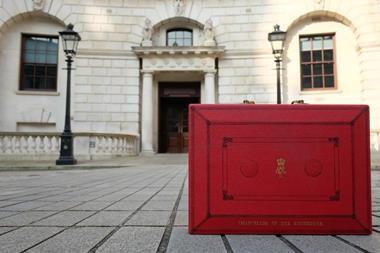Capital expenditure in the licensed trade has returned to pre-recession 2008 level of 6.1% of turnover, in a mark of confidence in the sector, the ALMR’s annual Benchmarking report reveals.
The ALMR suggested the high levels of investment could be defensive, given the competition within casual dining and the High Street, where operators are renewing their premises more often to entice customers and maintain revenue and market.
In a sign of the sensitivity to various pressures, like-for-like growth in the sector fell to just 1.1%, in 2016, indicating the sector may have experienced a contraction in real terms, with the Retail Price Index (RPI) measure of inflation growing by 1.9% over the same period.
Operators are continuing to focus on growing alternative revenue streams, particularly food sales, which now account for 34% of all revenue, and accommodation (2.5%), as consumer demand continues to shift.
Average overheads associated with running a licensed premises increased by 2.2ppts (percentage points) in the year, now standing at 51.5% of annual turnover - the highest total recorded since 2009.
The annual report by the ALMR and Christie & Co surveyed 55 companies providing data covering 5,604 managed outlets, and covered the period up to September 2016.
ALMR chief executive Kate Nicholls said: “Employers are looking at the political instability and uncertainty caused by Brexit and the possibility of significant cost increases, as wages rise and rates reliefs expire.
“There is a risk that additional costs could hit at a time of great instability hitting eating and drinking out businesses that are crucial to the UK economy and have helped restore prosperity to our town and city centres.”
Neil Morgan, managing director – pubs & restaurants at Christie & Co, added: “Despite the well-documented decline in pub numbers over the past three decades we are seeing a more lean and competitive sector emerging as operators diversify and respond to the continuing evolution of the UK consumer landscape.
“There is clearly confidence in the sector, highlighted by the report’s confidence survey and increasing levels of capital expenditure, however there are a number of political and economic pressures which could threaten some operators, all exacerbated by the uncertainty surrounding the Brexit negotiations.”
Payroll remain the single most significant cost for operators, rising to 27.9% over the year, though the introduction of the National Living Wage in April 2016 appears to have been partly mitigated by staffing and productivity efficiencies.
Wet sales across the entire survey accounted for 62.6% of turnover, a marginal increase on last year’s 61.3%, which was the lowest in the ten years of the survey.
Food sales accounted for 33.8%, the highest on record - although the number of casual dining outlets across respondents increased by 1,050.
In community local pubs and nightclubs, wet sales were worth 80.2% and 78.1% respectively, whereas in casual dining it was 29.8%.
Accommodation increased 0.7ppts to 2.5% of revenue, which supports the current trend for coaching inns and pubs with letting rooms.
The late night sector continues to evolve, with increasing revenue, a sign that operators are becoming less reliant on entrance fees or unable to sustain door charges.
Respondents reported an average 1.1% growth in like-for-like turnover for the year, indicating the sector may have experienced a contraction in real terms, with the Retail Price Index (RPI) measure of inflation growing by 1.9% over the same period.
Licensed accommodation recorded the highest like-for-like growth across all market segments at 5.1%.
Although high street and casual dining segments fell to the bottom of the class in terms of like-for-like performance, all segments saw growth, an improvement on the previous year, during which nightclubs and wine bars contracted.
Food-Led outlets reported subdued growth in the year with like-for-like sales growth falling for the third consecutive year, although this segment has continued to outperform the market in the eight years to September 2016, growing by around 57%, significantly in excess of the RPI of 21.2% reported over the same period.
Gross profit margins on food sales have reached a new high of 63.8%, a 0.7ppts increase from the previous high of 63.1% in 2014.
Within the casual dining segment margins on both wet and food sales have contracted, with both wet and dry margins falling, by 9.2ppts and 6.1ppts respectively, as a combination of competitive trading environment, increased outlets, currency valuation and the increased sample size in the current year manifest themselves.
Community Locals have seen the biggest increase in dry margins, as scale efficiencies from increased food sales, which now make up 16.2% of revenue (11.9% in 2015) take effect.
The average operating costs across all segments are 51.5% of turnover, before rent is taken into account, a significant increase on the previous year (49.3%).
With the cost of implementing legislation, this could rise further in coming years, particularly if these costs cannot be fully passed on to the consumers.
Average operational costs amounted to 6.6% of turnover in the year to September 2016, the second biggest overhead.
Premises costs, which exclude rent, are at historically low levels of 5.8%, largely as a result of the semi-fixed nature of these costs at a time of like-for-like growth - as well as low insurance premiums, and lower repair and maintenance spend given the increased capital expenditure noted further on in this section.
The average level of rent across the survey was equivalent to 8.5% of turnover, down 0.9ppts from the previous year, with rental costs in nightclubs now 11.2% of turnover.
The average capital expenditure across the entire survey was 6.1%, with the pre-recession levels significant due to the investment in 2007 at the time the smoking ban was introduced.
The report finds: “It remains to be seen how much of this investment is defensive in nature, given the backdrop of strong competition within the casual dining and high street segments in particular, where operators are having to refresh and renew their premises more frequently in an effort to entice customers and ultimately maintain revenue levels and market share.”
The majority of respondents felt Brexit would have little impact to their business in 2017, though a significant minority of operators (29%) felt there would be some contraction as a result of the referendum vote, with 7% expecting to see some benefits.
In the longer-term there was a polarisation of views with more operators believing it will lead to significant contractions but also more that thought they would see moderate growth.
Survey responses were provided in early 2017, before the events of recent months.









































